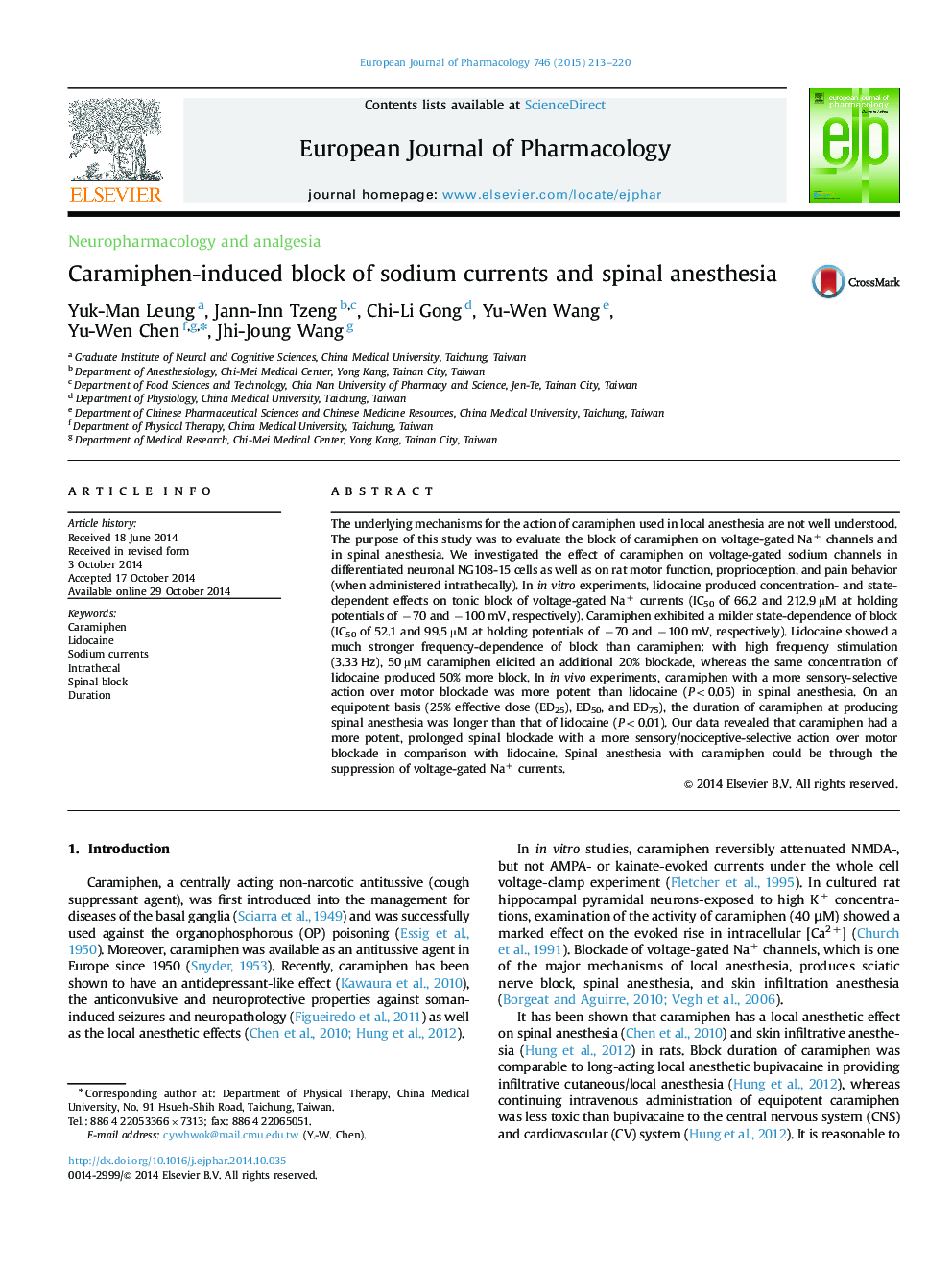| Article ID | Journal | Published Year | Pages | File Type |
|---|---|---|---|---|
| 2531563 | European Journal of Pharmacology | 2015 | 8 Pages |
The underlying mechanisms for the action of caramiphen used in local anesthesia are not well understood. The purpose of this study was to evaluate the block of caramiphen on voltage-gated Na+ channels and in spinal anesthesia. We investigated the effect of caramiphen on voltage-gated sodium channels in differentiated neuronal NG108-15 cells as well as on rat motor function, proprioception, and pain behavior (when administered intrathecally). In in vitro experiments, lidocaine produced concentration- and state-dependent effects on tonic block of voltage-gated Na+ currents (IC50 of 66.2 and 212.9 µM at holding potentials of −70 and −100 mV, respectively). Caramiphen exhibited a milder state-dependence of block (IC50 of 52.1 and 99.5 µM at holding potentials of −70 and −100 mV, respectively). Lidocaine showed a much stronger frequency-dependence of block than caramiphen: with high frequency stimulation (3.33 Hz), 50 µM caramiphen elicited an additional 20% blockade, whereas the same concentration of lidocaine produced 50% more block. In in vivo experiments, caramiphen with a more sensory-selective action over motor blockade was more potent than lidocaine (P<0.05) in spinal anesthesia. On an equipotent basis (25% effective dose (ED25), ED50, and ED75), the duration of caramiphen at producing spinal anesthesia was longer than that of lidocaine (P<0.01). Our data revealed that caramiphen had a more potent, prolonged spinal blockade with a more sensory/nociceptive-selective action over motor blockade in comparison with lidocaine. Spinal anesthesia with caramiphen could be through the suppression of voltage-gated Na+ currents.
